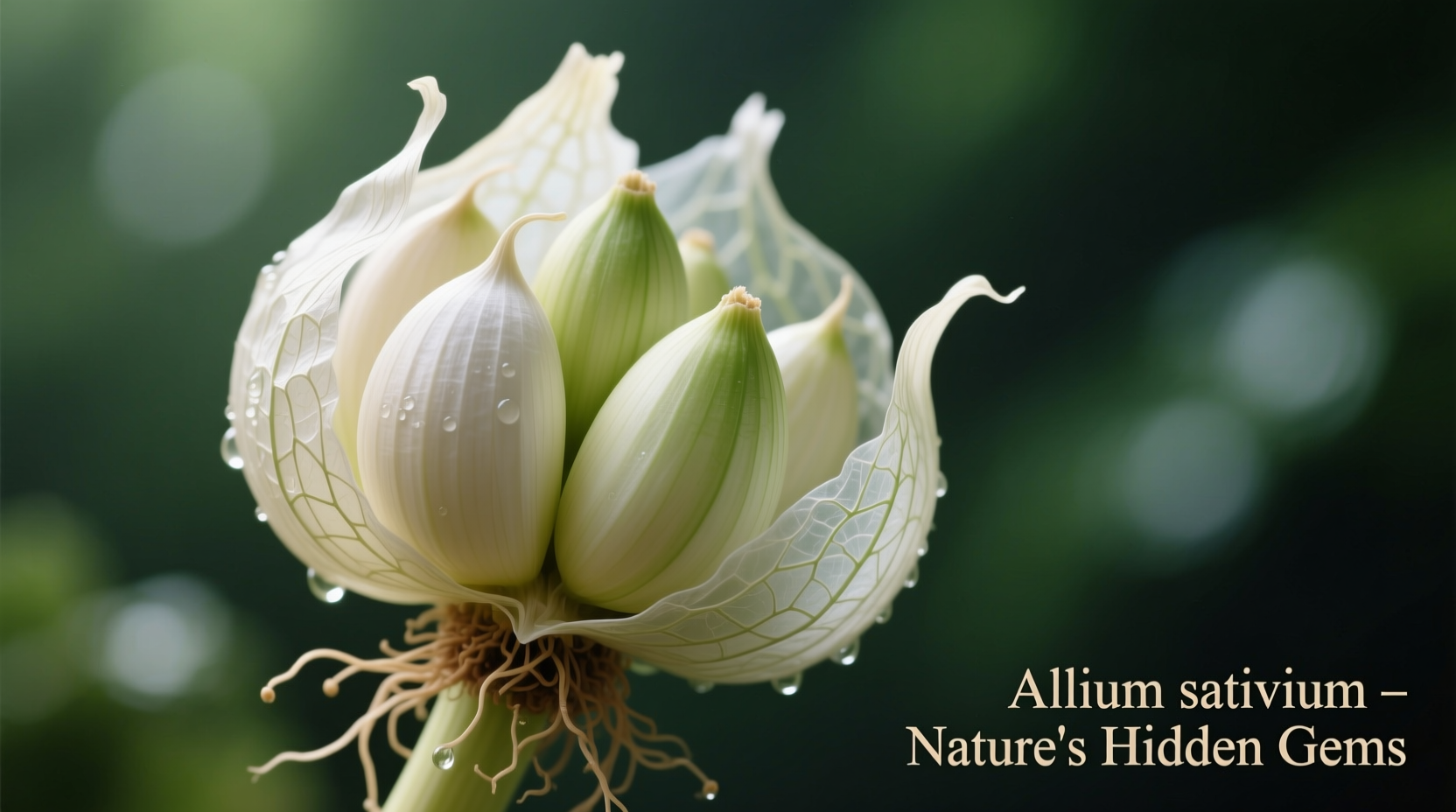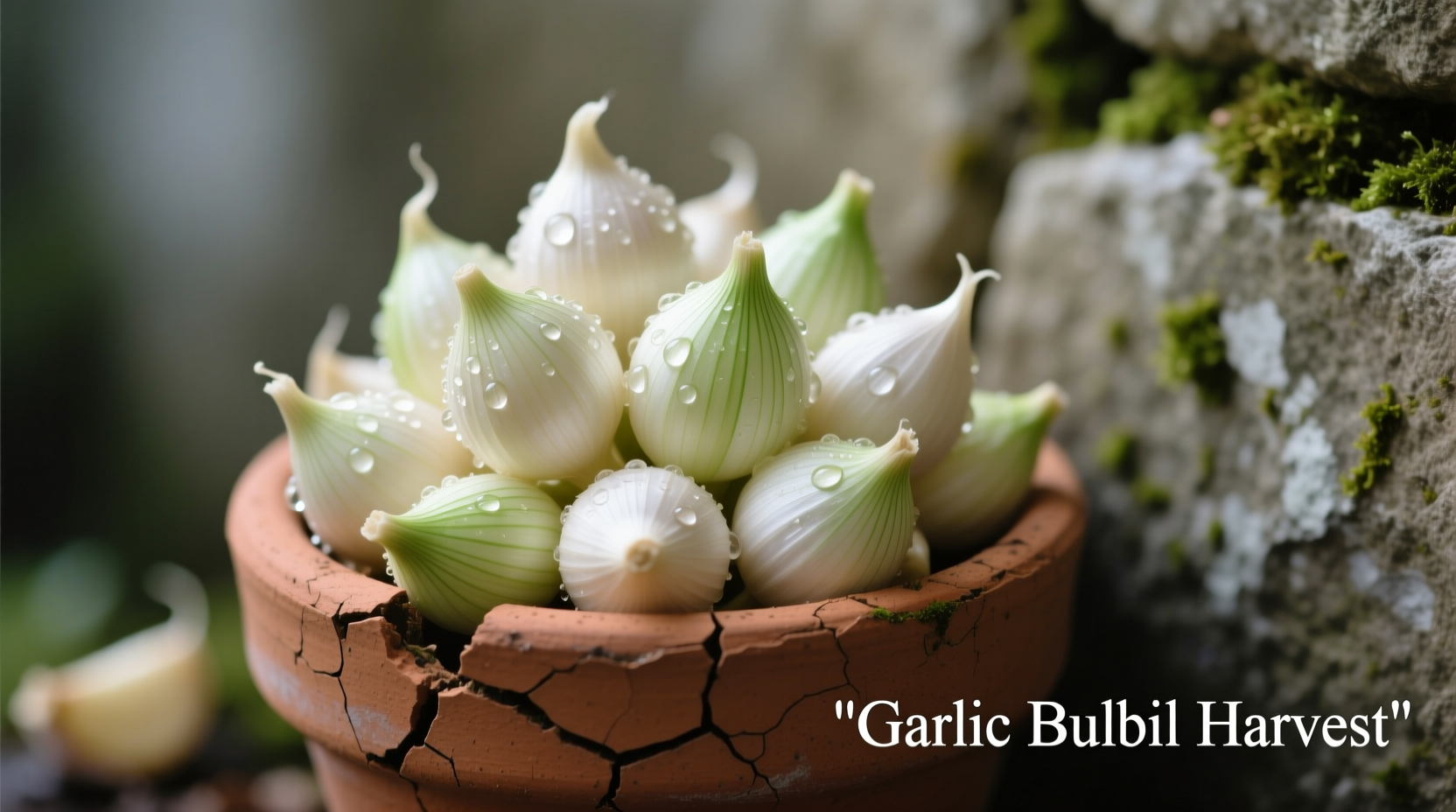Garlic bulbils are small, aerial cloves that form in the flower head (scape) of hardneck garlic varieties, offering gardeners a unique propagation method that produces disease-free plants and preserves genetic diversity. Unlike traditional cloves, bulbils take 2-3 years to mature into full bulbs but provide significant advantages for sustainable garlic cultivation.
Discover how these tiny garlic treasures can transform your garden. By the end of this guide, you'll know exactly when to harvest bulbils, how to plant them for maximum yield, and why they're becoming the secret weapon of experienced garlic growers. Whether you're battling soil-borne diseases or seeking to expand your garlic varieties, bulbils offer solutions you won't find with conventional cloves.
What Exactly Are Garlic Bulbils?
Garlic bulbils represent nature's ingenious propagation system for hardneck garlic varieties (Allium sativum var. ophioscorodon). These miniature cloves develop in the protective bract of the garlic scape instead of producing flowers. Each bulbil functions as a complete genetic replica of the parent plant, encased in a papery husk similar to regular garlic cloves but significantly smaller—typically ranging from 3-8mm in diameter.
Unlike softneck garlic varieties that rarely produce scapes, hardneck types reliably form these bulbils as part of their reproductive cycle. The University of Vermont Extension confirms that bulbil production serves as the plant's natural mechanism for propagation when flowering is inhibited by environmental conditions.
| Characteristic | Garlic Bulbils | Traditional Garlic Cloves |
|---|---|---|
| Origin | Develop in flower head (scape) | Form in underground bulb |
| Size | 3-8mm diameter | 15-40mm length |
| Time to Maturity | 2-3 growing seasons | 1 growing season |
| Disease Resistance | Naturally disease-free | May carry soil pathogens |
| Genetic Variation | Exact clone of parent | Exact clone of parent |
Why Seasoned Growers Choose Bulbils Over Cloves
While planting regular garlic cloves delivers harvestable bulbs in a single season, bulbils offer distinct advantages that make them worth the extra patience. Research from Cornell University's Department of Horticulture shows that bulbils provide critical benefits for long-term garlic cultivation:
- Disease elimination - Bulbils develop above ground, completely avoiding soil-borne pathogens like white rot and nematodes that commonly plague traditional garlic crops
- Genetic preservation - They maintain the exact genetic profile of heirloom varieties that might otherwise degrade through successive clove propagation
- Cost efficiency - A single scape can produce 20-100 bulbils, multiplying your planting stock exponentially compared to the 4-12 cloves from one bulb
- Adaptation potential - Gardeners report that bulbil-grown garlic gradually adapts better to local growing conditions over successive generations
"Bulbils represent garlic's natural defense mechanism against soil pathogens," explains Dr. David Stern of the Northeast Organic Farming Association. "When you propagate through bulbils, you're working with the plant's evolutionary strategy for survival."

Your Step-by-Step Guide to Harvesting Bulbils
Timing proves critical for successful bulbil harvest. Follow this precise sequence for optimal results:
- Monitor scape development - Watch for the characteristic curl in hardneck garlic scapes (typically late spring to early summer, depending on your climate zone)
- Wait for proper maturity - Harvest when the scape straightens and the flower head swells but before it splits open (approximately 2-3 weeks after initial curl)
- Cut at the right height - Use clean shears to cut scapes 4-6 inches below the flower head
- Dry properly - Hang scapes in a cool, dark, well-ventilated area for 2-3 weeks until the bracts become papery
- Extract bulbils - Gently break open the dried bracts and collect the bulbils, discarding any that appear shriveled or discolored
The USDA Agricultural Research Service notes that premature harvesting yields underdeveloped bulbils with poor germination rates, while waiting too long results in bulbils that naturally disperse and become difficult to collect.
Planting Bulbils for Maximum Success
Unlike cloves that go directly into the ground in fall, bulbils require a specialized planting approach:
First-Year Planting (Bulbil to Round)
Plant bulbils in late summer or early fall (4-6 weeks before first frost) at a depth of 1-2 inches, spaced 2-4 inches apart in well-prepared soil. During their first growing season, bulbils will produce single-clove bulbs called "rounds" rather than multi-clove bulbs.
Second-Year Planting (Round to Full Bulb)
After harvesting your rounds in summer, replant them in fall at standard garlic spacing (6 inches apart in rows 12-18 inches apart). These will develop into full, multi-clove bulbs during their second growing season.
| Season | Action Required | Expected Outcome |
|---|---|---|
| Late Spring | Monitor scape development | Identify optimal harvest window |
| Early Summer | Harvest mature scapes | Collect 20-100 bulbils per scape |
| Late Summer | Plant bulbils 1-2" deep | First-year growth as single-clove rounds |
| Following Summer | Harvest and sort rounds | Prepare for second-year planting |
| Second Fall | Plant rounds at standard spacing | Develop into full multi-clove bulbs |
| Second Summer | Harvest mature garlic bulbs | Enjoy disease-free, genetically pure harvest |
When Bulbils Outperform Traditional Cloves
While bulbils require more time, they shine in specific situations where traditional cloves fall short:
- Disease-ridden soil - If your garden has a history of white rot, basal rot, or nematode infestations, bulbils provide a clean start
- Heirloom preservation - When maintaining rare or heritage garlic varieties that might degrade through successive clove propagation
- Regional adaptation - Building locally adapted stock that performs better in your specific climate and soil conditions
- Commercial propagation - Multiplying planting stock exponentially for market growers
However, bulbils aren't ideal for everyone. The Rodale Institute's organic farming research indicates that bulbils represent a poor choice if you need garlic in a single growing season or lack the patience for the 2-3 year development cycle. They also require more precise planting depth than cloves, making them slightly more challenging for absolute beginners.
Troubleshooting Common Bulbil Challenges
Even experienced growers encounter these issues. Here's how to solve them:
Low Germination Rates
If fewer than 60% of your bulbils sprout, check these factors:
- Planting depth (too deep prevents emergence)
- Soil temperature (below 40°F or above 80°F inhibits germination)
- Bulbil maturity (harvested too early)
Poor Round Development
Small or misshapen rounds typically indicate:
- Insufficient spacing (crowded plants compete for resources)
- Nutrient deficiency (particularly phosphorus and potassium)
- Water stress during bulb formation
Failure to Form Full Bulbs in Year Two
If your rounds don't develop into proper bulbs:
- Check planting timing (must experience winter chill period)
- Verify adequate sunlight (minimum 6 hours daily)
- Assess soil drainage (garlic hates wet feet)
According to Oregon State University's garlic production guide, the most common mistake growers make with bulbils is expecting first-year harvests. Patience proves essential—treat the first year as purely vegetative growth focused on building strong roots and leaves.











 浙公网安备
33010002000092号
浙公网安备
33010002000092号 浙B2-20120091-4
浙B2-20120091-4